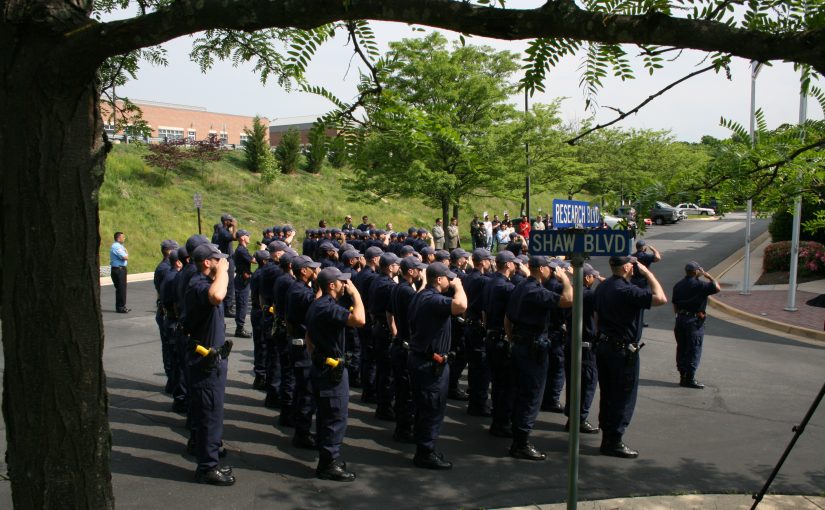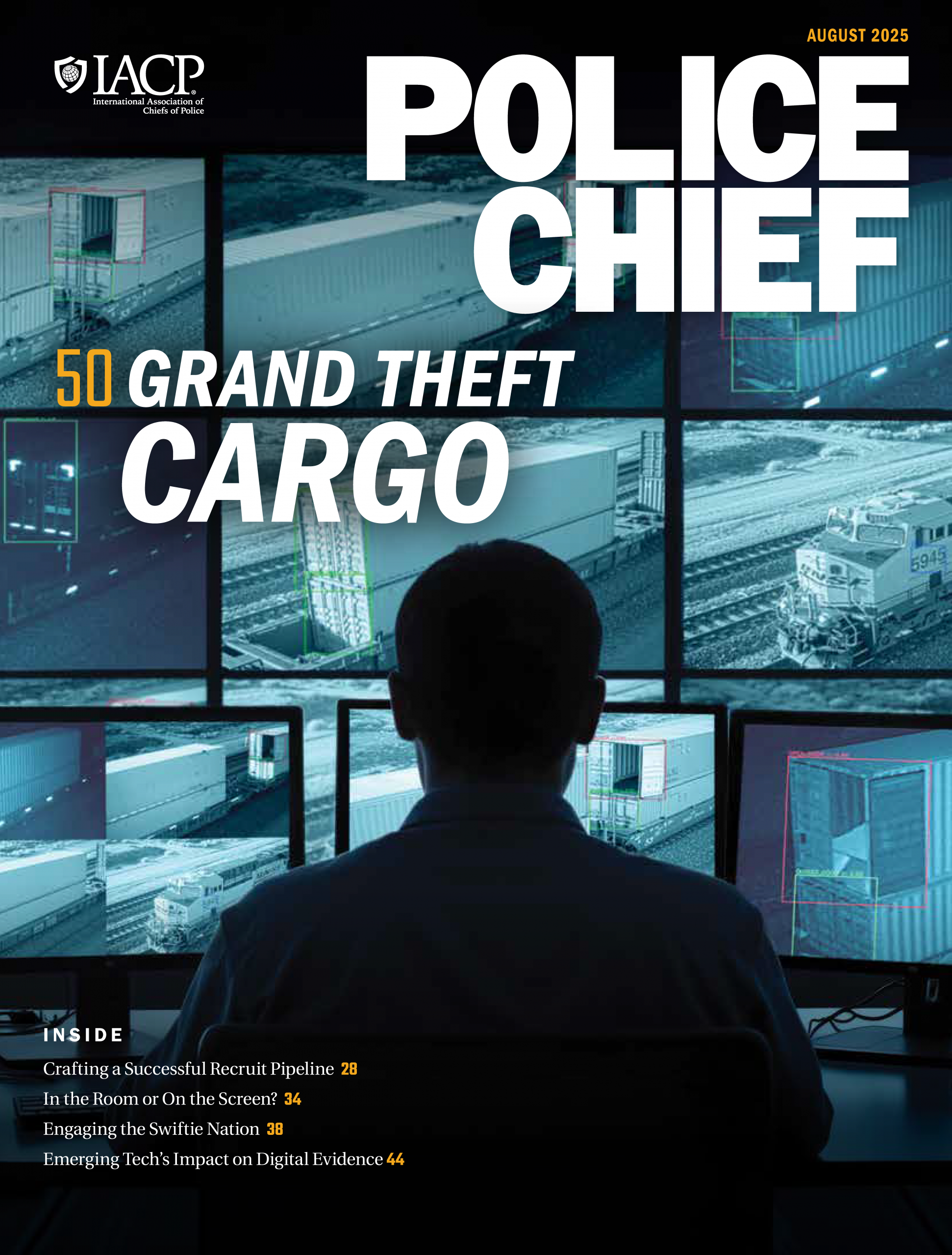Many law enforcement agencies across the United States are experiencing overwhelming challenges in recruiting police officers. The negative portrayal of policing due to questionable police shootings and excessive force complaints has damaged the police brand. Individuals who once sought to serve and protect are reconsidering joining the profession. Where agencies once had their pick from a record number of applicants, they now rarely receive enough applications to fill open positions. Hence, departments are facing a recruitment challenge. Additionally, a 2021 Police Executive Research Forum workplace survey found an increase in retirement and resignation rates among officers, as well as a decrease in hiring rates.1 Thus, there are fewer police officers to protect the community.
While these are significant challenges, agencies can seek new ways to recruit eligible candidates. To recruit effectively, agencies should consider the intricacies of the current hirable generations: millennials and Generation Z.
Millennials, who were born between 1981 and 1996, are typically more team oriented, tech savvy, cooperative, and interdependent.2 They feel that traditional family values are essential, enjoy taking time off work to spend with family, and believe retirement benefits are important.3 Furthermore, millennials are changing jobs 24 percent more often than other generational groups, and 23 percent of millennials plan to leave their jobs.4
Generation Z (Gen Z), born between 1997 and 2012, is the first fully digital generation in history.5 Gen Zers recognize brand awareness and are more socially conscious than previous generations.6 Furthermore, they are the most diverse generation yet. They are educated and self-driven, and they value flexibility.7 Finally, they are considered to be open-minded, pragmatic, and stability seeking. This list coincides with the qualities recommended by the President’s Task Force on 21st Century Policing, specifically regarding diversity and open-mindedness.8
Other important Gen Z traits involve the need for constant feedback and strict parameters of job performance.9 Unfortunately, this generation’s intrinsic and extrinsic motivators typically do not coincide with the modern policing structure. Regular feedback, increased interpersonal relationships, work flexibility, ample career growth opportunities, social media usage, diversity, and inclusion are not the primary selling points for the average police agency.10 Furthermore, Gen Zers are changing jobs 34 percent more often than they were in 2019, and 25 percent say they hope or plan to leave their jobs within six months.11
Knowledge of these generations’ characteristics and drivers is the key. Once each is better understood, motivations may be determined, and a recruitment plan can begin. Agencies can build and implement creative recruitment strategies around these motivations. The following strategies include suggestions for enhancing a law enforcement agency’s brand (image) and leadership and focus on embracing modern generational differences.
Rebranding for Recruitment
Agencies can utilize social media platforms to highlight their organization and promote their agency. Social media is beneficial for communicating opportunities to younger generations.12 Considering that millennials and Gen Zers are tech savvy and value social media, social media will provide increased visibility for the department.13 On social media, an agency could post about its attendance at trade shows, college and high school visits, public events, parades, volunteer events, and job fairs. Furthermore, the agency could highlight its ride-along programs, shadow programs, and internships. Another avenue would be for the department to use the platform to highlight existing officers and personnel within the organization via video. Video clips could feature a short biography of an officer and the role of the individual within the organization.
Another idea is to create a video to promote an agency’s strengths regarding job benefits (e.g., financial hiring incentives, education stipends, competitive salaries, or retirement benefits) and other positive aspects of the agency (innovative equipment, areas of expertise, or opportunities for advancement). Furthermore, the videos could illustrate a culturally diverse workforce within the department and market law enforcement by providing segments of officers handling complex situations, such as domestic violence incidences.14
Second, agencies must create an image or brand that relates to their particular expertise or position within the law enforcement community, thus becoming the positive subject of discussion concerning law enforcement in its area.15
The department may also want to speak with its officers and community members to gather information about the agency’s image or brand. Regardless of how an agency seeks to incorporate a brand, the department should have one that is “all-encompassing, creating a desirable emotional image and physical response when you think of that brand.”16
While many organizations may simply hire a professional marketeer, some budgets may be too tight for this path. Thus, there are other options. These include an agency partnering with a college or university to hire a marketing intern. The agency would need to prepare the duties and responsibilities and then contact their local college or university to inquire about the internship process. Similarly, an agency could partner with a college or university to propose its branding project as part of a marketing class assignment.
The agency could also seek assistance from the community by advertising a call for proposals, with the most popular submission receiving an award. Such an award is an excellent line on an individual’s resume.
Third, agency leadership should encourage and actively seek ideas submitted by all staff, especially younger officers who have been promoted to middle-level and senior-level positions from within the organization’s ranks. These professionals are ambitious and often want the agency to succeed. Their ideas should be considered and given importance as this provides impetus for ideas for future action, potentially increases morale, promotes a culture of constant improvement, and encourages bottom-up communication.
Addressing Diversity, Equity & Inclusion
Agencies should ensure all personnel are regularly trained in diversity, equity, and inclusion (DEI). Further, there must also be a standard of compliance to ensure that training is occurring and that personnel are retaining the standards.17 The Baltimore (Maryland) Police Department launched an innovative and engaging DEI toolkit as part of their regular standard training resources. The toolkit offers several training materials and resources that provide personnel with strategies to promote DEI within the organization and the public. This strategy enables a message of reform and culture change to society and the public.18
Law enforcement agencies should initiate and continue engagement in community events and sponsor outreach activities such as with the National Organization of Black Law Enforcement Executive (NOBLE) and its The Law and Your Community program. The Law and Your Community is a NOBLE-sponsored community relations program in partnership with local law enforcement agencies that promotes positive community-police relations.19 The local police meet with youth and parents in schools and religious institutions to discuss police-public interactions, such as what to expect during a traffic stop and work to develop an understanding of community-police interactions. Ensuring understanding and transparency enhances public trust and the community’s perception of the role of law enforcement, as well as its commitment to DEI.
Departments may want to consider developing youth-oriented outreach programs to foster generational changes and diversity. For example, the Law Enforcement Youth Academy, based in Aurora, Illinois, includes the Aurora Police and Kane County Sheriff’s Office, federal criminal justice, and community leadership. The academy provides an opportunity for youths ages 14 to 18 to develop an understanding of the legal system and build positive relationships with law enforcement.
Similarly, the Louisville (Kentucky) Metro Police Department has a Youth Citizen Police Academy for those aged 14 to 17. It is designed to provide comprehensive training and prepare those interested for a career with the LMPD.20 These and other youth-oriented outreach such as internships, youth camps, and explorer programs can also stimulate the younger generation’s interest in becoming a member of the criminal justice community. While budgets may be an issue, departments can seek grants to fund these outreach opportunities. Additionally, agencies can partner with other local, state, and federal agencies to establish necessary resources.
Enhancing Leadership to Help Recruitment
When it comes to leadership, agencies may want to consider the servant leadership approach. Retired Chief Bill Gardner and Professor John Reece advocate for the agency leader to “internalize leadership as a calling to serve others before self.”21 A servant leader helps and guides people rather than trying to control employees only through policy and rules. Prior research supports this approach; officers with an identified servant leadership law enforcement agency reported that the agency was committed to their growth, dedicated to the mental and emotional health of the officers, promoted physical fitness and healthy living, and created a culture of belonging.22 Thus, by ensuring officers have growth opportunities; are mentally, physically, and emotionally healthy; and feel a sense of belonging, everyone benefits, including the officers, the agency, and the community. “Job satisfaction is the number one factor in retention. Good employees start looking elsewhere when they are unhappy, and retaining employees is just as important as recruiting.”23
 Law enforcement leaders should invest in an organization’s social media information component composed of “influencers” within the agency and a civilian support structure. This social media information component would be responsible for identifying critical calls for service, proactive public safety stops, or community outreach projects and posting that information to demonstrate the organization’s commitment to community values and transparency. This team will speak to all generations of the public spreading the agency’s message, mission, and values during daily events in a medium today’s youths understand.
Law enforcement leaders should invest in an organization’s social media information component composed of “influencers” within the agency and a civilian support structure. This social media information component would be responsible for identifying critical calls for service, proactive public safety stops, or community outreach projects and posting that information to demonstrate the organization’s commitment to community values and transparency. This team will speak to all generations of the public spreading the agency’s message, mission, and values during daily events in a medium today’s youths understand.
It is critical that agency leaders promote extreme transparency. In a recent study, police executives were surveyed about new laws requiring the release of body-worn camera (BWC) footage involving police use of force. About half surveyed opposed such legislation, and another third remained neutral.24 Hence, it could be concluded that the opposition for BWC involves a lack of transparency incongruent with present-day reality as Generation Z spends half their waking hours using social media, streaming entertainment, or gaming25 which offers information almost instantaneously, sometimes in a live-streamed format. Thus, when violent acts occur, there is a tendency to seek information with an expectation of instant gratification, and by withholding information, agencies may unintentionally promote myths and skepticism. Law enforcement leadership that initiates communication with the public immediately after officer-involved incidents and provides transparency of the incident will drive the organization’s brand of openness, which is required to build trust with younger generations.
An internal climate assessment survey of all (sworn and non-sworn) personnel to measure the current organizational climate could help leadership with recruitment and even retention. Such a survey must include targeted questions about the department’s current recruiting strategies and retention tools. The internal climate assessment survey can be offered in an anonymous online questionnaire format and should include a comments section so that personnel can offer ideas and recommendations and outline department and organizational concerns. This inclusive strategy will provide senior leadership with an initial snapshot of the immediate, short-term, and long-term strategies that can be implemented to address internal issues within the organization.26 While some agencies may briefly glance at this strategy and dismiss it, it is important that leadership be aware of the organization’s climate. An anonymous survey will hopefully identify any issues personnel neglect to discuss openly (due to severity or controversy) so that these issues can be addressed before the department attempts to recruit new members.
More Strategies to Aid Recruitment
Law enforcement should attempt to partner with colleges, universities, and high schools to promote careers in policing. Research indicates that college students already committed to criminal justice studies were still motivated toward a career in policing.27 Hence, agencies should attempt to attend college and university career fairs and career days and volunteer to speak on special topics in the classroom. Most state and local agencies require a high school education for entry-level officers.28 Most schools (58 percent) have at least one school resource officer (SRO) or other sworn officer present at least one day a week.29 Thus, agencies could utilize their SRO to enhance existing school and community programs and increase students’ interest in becoming public servants in local law enforcement.
 Law enforcement agencies may want to implement technology alongside current resources. For example, the Los Angeles (California) Police Department added a chatbot called “Officer CHIP” and utilizes current personnel as mentors for applicants to assist them through the process.30 Similarly, to boost recruitment, the New York City Police Department waived the test fee for diverse recruits, assisted recruits with test prep and compiling documents for background checks, and allowed individuals to apply remotely with laptops. This recruitment strategy resulted in a record 14,502 applicants who signed up to take the exam, with 70 percent of those applicants identifying as minorities.31
Law enforcement agencies may want to implement technology alongside current resources. For example, the Los Angeles (California) Police Department added a chatbot called “Officer CHIP” and utilizes current personnel as mentors for applicants to assist them through the process.30 Similarly, to boost recruitment, the New York City Police Department waived the test fee for diverse recruits, assisted recruits with test prep and compiling documents for background checks, and allowed individuals to apply remotely with laptops. This recruitment strategy resulted in a record 14,502 applicants who signed up to take the exam, with 70 percent of those applicants identifying as minorities.31
Lastly, it may be time for departments to move away from excessive overtime and rotating shifts. Research on other first responders indicates that those working rotational shifts experienced sleep deprivation when working the night shift. The night shift was associated with higher stress levels, fatigue, and -sleepiness.32 This has severe implications for current and future personnel as it could lead to burnout, disengagement, or possibly injuries or fatalities, placing the department at risk. This strategy can affect the retention of current employees, which then affects recruitment. Furthermore, these shift patterns negatively affect the work-life balance, which both Gen Zers and millennials highly value, thus potentially becoming a barrier to applicants interested in the field.
Conclusion
A well-staffed law enforcement agency is at the core of every safe and stable community. Hence, all agencies need to receive qualified candidates when positions become available. Unfortunately, the public opinion of policing has not been as strong in the past few years; thus, individuals may decide not to apply and officers may retire or resign. However, agencies can proactively recruit qualified personnel to serve and protect the communities utilizing the strategies provided. 🛡
Notes:
1Police Executive Research Forum (PERF), Survey on Police Workforce Trends (PERF, 2021).
2Michael Dimock, “Defining Generations: Where Millennials End and Generation Z Begins,” Pew Research Center, January 17, 2019.
3Ben Langham, “Millennials and Improving Recruitment in Law Enforcement,” Police Chief Online, May 24, 2017; Laura Werber Castaneda and Greg Ridgeway, Today’s Police and Sheriff Recruits: Insights from the Newest Members of America’s Law Enforcement Community (RAND Corporation, 2010).
4Erica Pandey, “The Great Resignation Generation: Gen Z Wants to Job Hop,” Axios, February 25, 2022.
5Dimock, “Defining Generations.”
6Hanna Reinikainen, Jaana T. Kari, and Vilma Luoma-aho, “Generation Z and Organizational Listening on Social Media,” Media and Communication 8, no. 2 (2020): 185–196.
7Melissa De Witte, “Gen Z Are Not ‘Coddled.’ They Are Highly Collaborative, Self-Reliant and Pragmatic According to New Stanford-Affiliated Research,” Stanford News, January 3, 2022.
8The President’s Task Force on 21st Century Policing Implementation Guide: Moving from Recommendations to Action (Washington, DC: Office for Community Oriented Policing Services, 2015).
9Bharat Chillakuri, “Understanding Generation Z Expectations for Effective Onboarding,” Journal of Organizational Change Management 33, no. 7 (December 2020): 1277–1296.
10Kate M. Den Houter et al., “Policing Is Not for Me: Repelling Factors Implicated in Vocational Choice Elimination,” Policing and Society 33, no. 1 (2023): 32–50.
11 Pandey, “The Great Resignation Generation.”
12Ray Arcuri, “Recruitment and Retention for 2019 and Beyond,” Police Chief Online, February 27,2019.
13Theo Douglas, “Los Angeles Chatbot Deputized to Help with Police Recruitment,” Government Technology, February 16, 2018.
14Jeremy M. Wilson et al., Police Recruitment and Retention for the New Millennium (RAND Corporation, 2010).
15Chris Skinner, “Recruiting with Emotion and Market Positioning,” FBI Law Enforcement Bulletin, July 1, 2010.
16W. Michael Phipps, “Why Your Police Department Needs a Brand,” Police1, September 7, 2017.
17Charles Russo and Thomas Rzemyk, “Finding Equity, Inclusion, and Diversity in Policing,” Police Chief Online, August 4, 2021.
18Baltimore Police Department, DEIA Toolkit, 2022.
19NOBLE, “The Law and Your Community.” For information on a different program—one for college students—see Jennifer Styles and Joseph Marcus, “Bridging Perspectives and Building Relationships with University Students,” IACP@Work, Police Chief 86, no. 8 (August 2019): 72–74.
20“Free LMPD Youth Citizen’s Police Academy Underway,” Wave News, August 1, 2013.
21Bill Gardner and John Reece, “Revolutionizing Policing Through Servant-Leadership and Quality Management,” FBI Law Enforcement Bulletin, June 1, 2012.
22Eric J. Russell, Rodger Broomé, and Jamie Russell, “Servant Leadership and the Wellbeing of Police Officers: A Case Study,” Servant Leadership: Theory and Practice 5, no. 2 (Fall 2018): 73–92.
23Arcuri, “Recruitment and Retention for 2019 and Beyond.”
24Brandon Tregle, Justin Nix, and Justin T. Pickett, “Body-Worn Cameras and Transparency: Experimental Evidence of Inconsistency in Police Executive Decision-Making,” Justice Quarterly 39, no. 3 (2022): 455–477.
25Ryan Faughnder, “Gen Z Spends Half Its Waking Hours on Screen Time. Here’s the Good and Bad News for Hollywood,” Los Angeles Times, April 12, 2022.
26Russo and Rzemyk, “Finding Equity, Inclusion, and Diversity in Policing.”
27Weston J. Morrow, Samuel G. Vickovic, and John A. Shjarback, “Motivation to Enter the Police Profession in the Post-Ferguson Era: An Exploratory Analysis of Procedural Justice,” Criminal Justice Studies 34, no. 2 (2021): 135–155; David R. White and Joseph Ferrandino, “Criminal Justice Students’ Perceptions amid George Floyd’s Death and COVID-19,” Journal of Criminal Justice Education 33, no. 1 (2022): 58–75.
28U.S. Bureau of Labor Statistics, U.S. Department of Labor, Occupational Outlook Handbook, Police and Detectives, 2022.
29Melissa Diliberti et al., Crime, Violence, Discipline, and Safety in U.S. Public Schools: Findings From the School Survey on Crime and Safety: 2017–18—First Look (Washington, DC: U.S. Department of Education, 2019).
30Douglas, “Los Angeles Chatbot Deputized to Help with Police Recruitment.”
31Emily Davenport, “NYPD Sees Big Increases in Minority Applicants for June Exam Following Recruitment Campaign,” AMNY, May 18, 2021.
32Wahaj Anwar A. Khan et al., “A Field Investigation of the Relationship Between Rotating Shifts, Sleep, Mental Health and Physical Activity of Australian Paramedics,” Scientific Reports 11, 866 (2021).
Please cite as
Ashley French et al., “Improving Recruitment: Strategies for Law Enforcement Agencies,” Police Chief Online, May 3, 2023.



